Abstract
Ricinus communis L. was used to test the Dijkshoorn-Ben Zioni hypothesis that NO3− uptake by roots is regulated by NO3− assimilation in the shoot. The fate of the electronegative charge arising from total assimilated NO3− (and SO42−) was followed in its distribution between organic anion accumulation and HCO3− excretion into the nutrient solution. In plants adequately supplied with NO3−, HCO3− excretion accounted for about 47% of the anion charge, reflecting an excess nutrient anion over cation uptake. In vivo nitrate reductase assays revealed that the roots represented the site of about 44% of the total NO3− reduction in the plants. To trace vascular transport of ionic and nitrogenous constituents within the plant, the composition of both xylem and phloem saps was thoroughly investigated. Detailed dry tissue and sap analyses revealed that only between 19 and 24% of the HCO3− excretion could be accounted for from oxidative decarboxylation of shoot-borne organic anions produced in the NO3− reduction process. The results obtained in this investigation may be interpreted as providing direct evidence for a minor importance of phloem transport of cation-organate for the regulation of intracellular pH and electroneutrality, thus practically eliminating the necessity for the Dijkshoorn-Ben Zioni recycling process.
Full text
PDF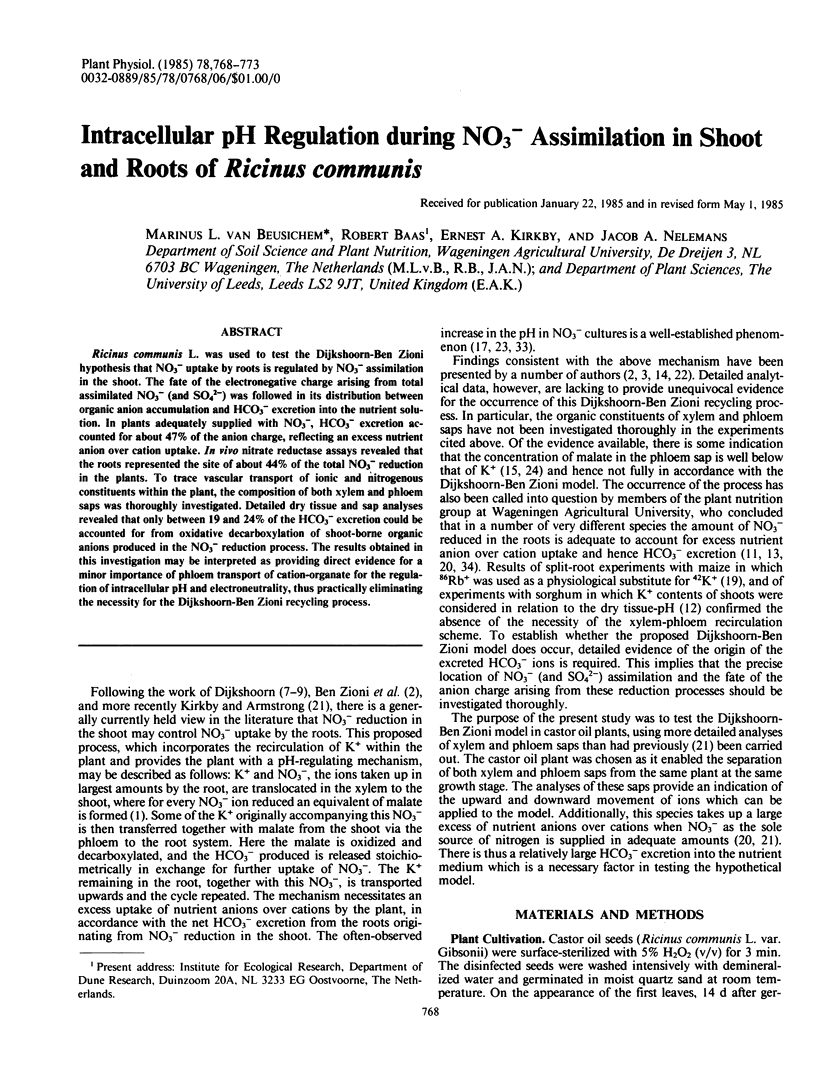
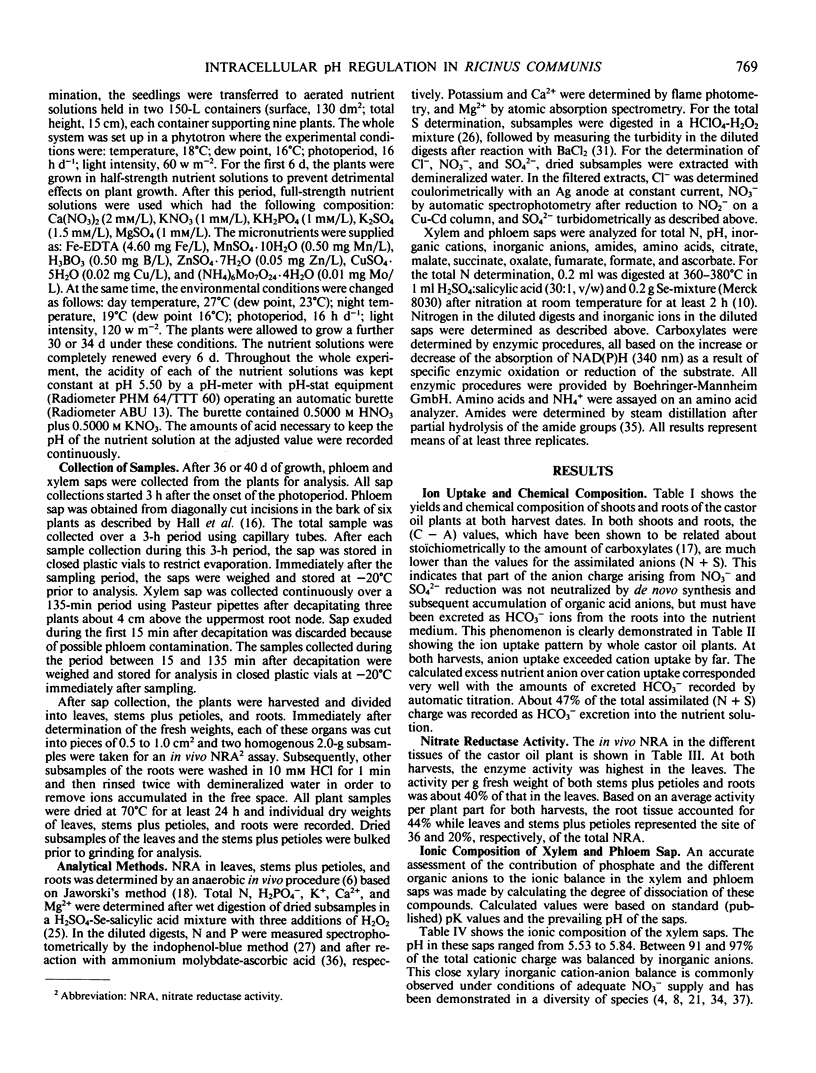
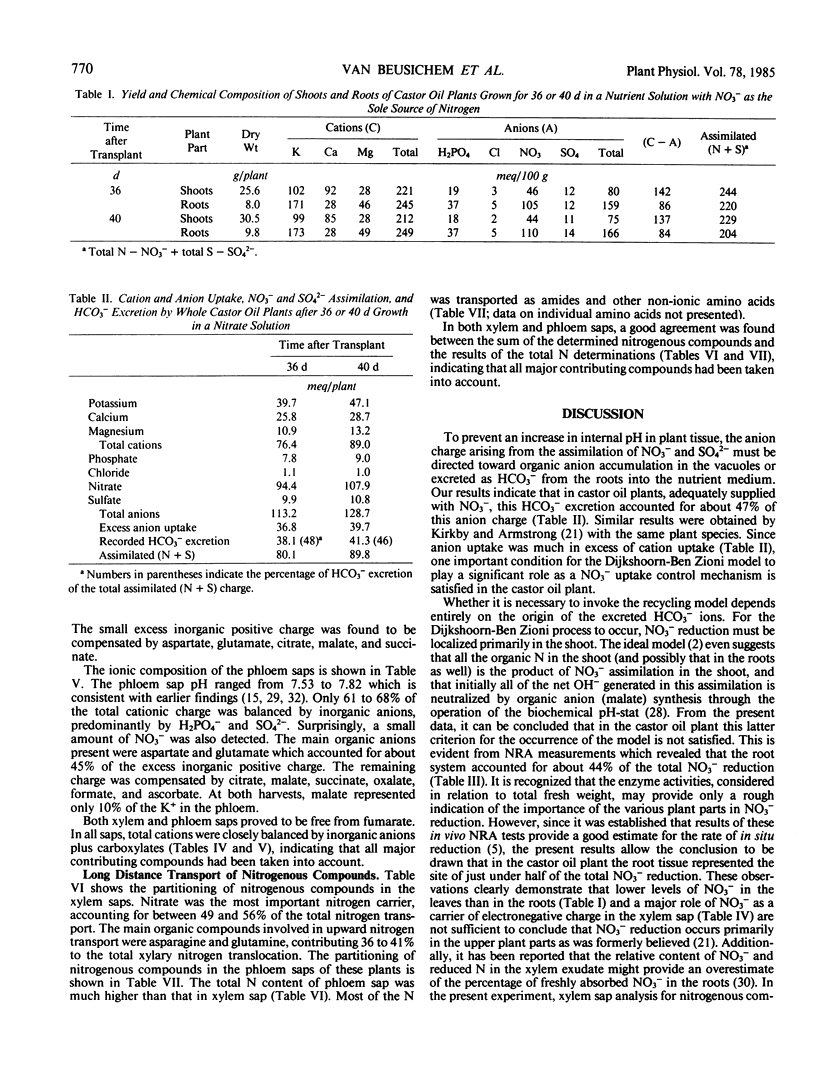
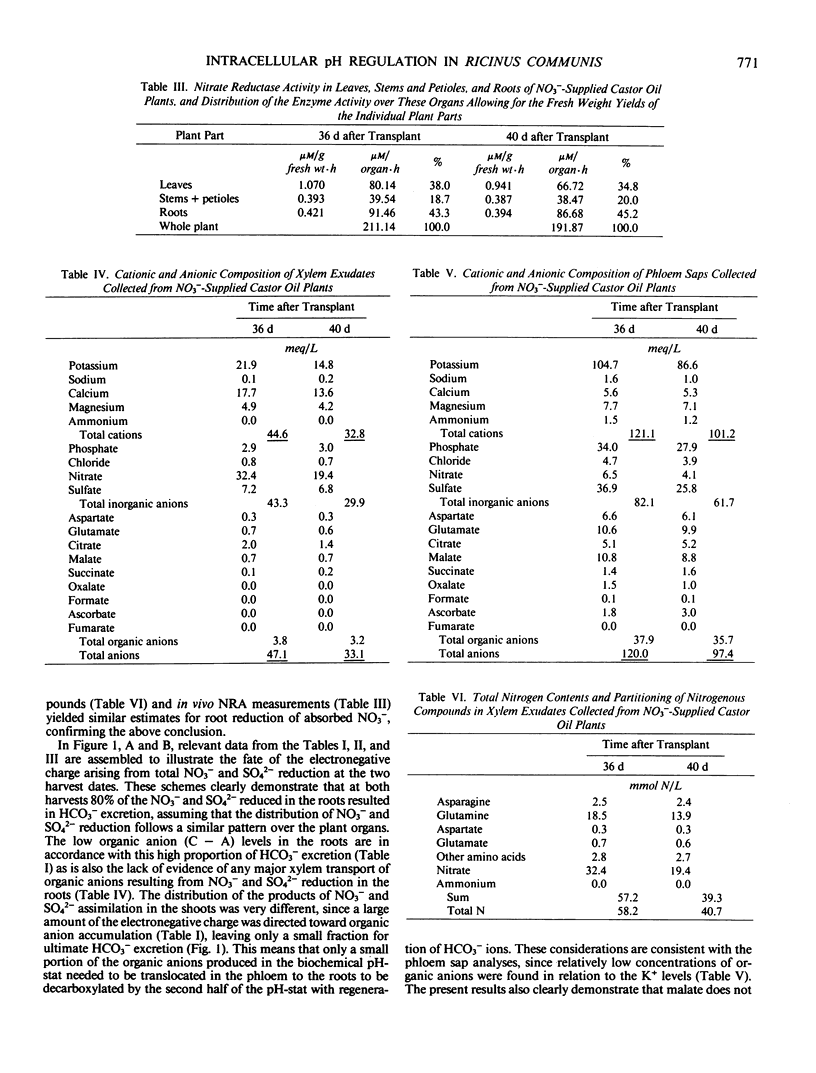
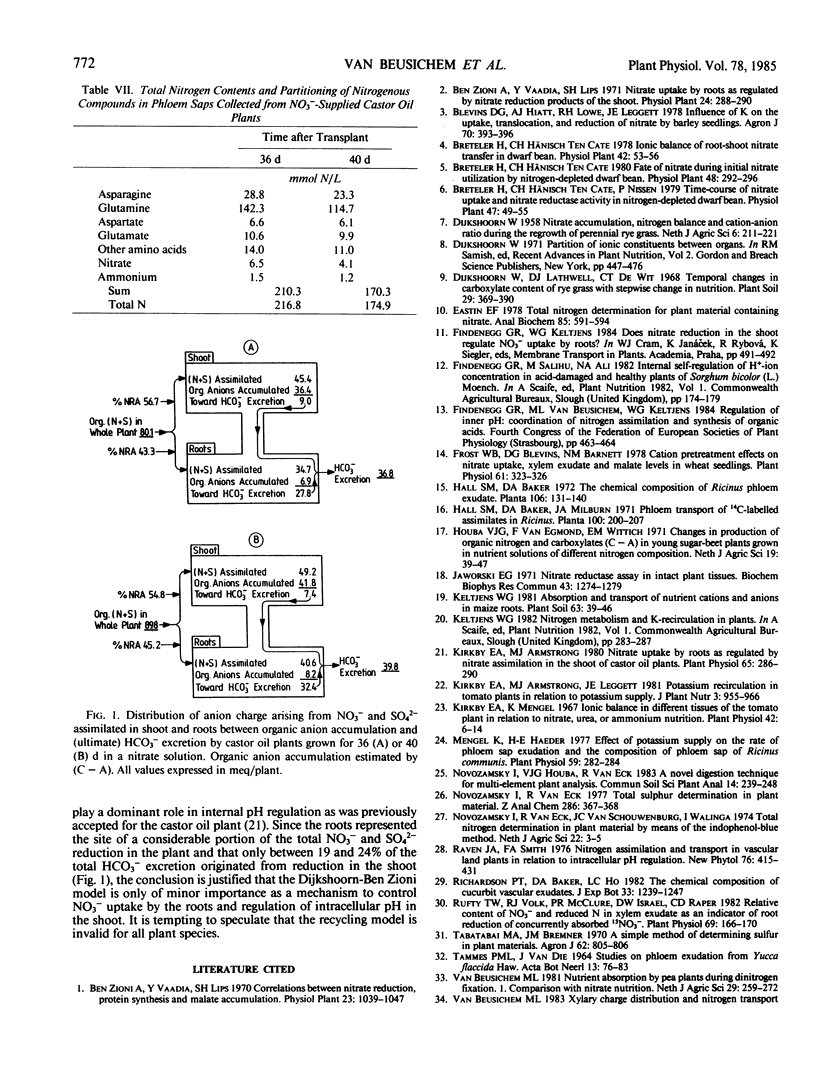

Selected References
These references are in PubMed. This may not be the complete list of references from this article.
- Eastin E. F. Total nitrogen determining for plant material containing nitrate. Anal Biochem. 1978 Apr;85(2):591–594. doi: 10.1016/0003-2697(78)90259-2. [DOI] [PubMed] [Google Scholar]
- Frost W. B., Blevins D. G., Barnett N. M. Cation pretreatment effects on nitrate uptake, xylem exudate, and malate levels in wheat seedlings. Plant Physiol. 1978 Mar;61(3):323–326. doi: 10.1104/pp.61.3.323. [DOI] [PMC free article] [PubMed] [Google Scholar]
- Jaworski E. G. Nitrate reductase assay in intact plant tissues. Biochem Biophys Res Commun. 1971 Jun 18;43(6):1274–1279. doi: 10.1016/s0006-291x(71)80010-4. [DOI] [PubMed] [Google Scholar]
- Kirkby E. A., Armstrong M. J. Nitrate uptake by roots as regulated by nitrate assimilation in the shoot of castor oil plants. Plant Physiol. 1980 Feb;65(2):286–290. doi: 10.1104/pp.65.2.286. [DOI] [PMC free article] [PubMed] [Google Scholar]
- Kirkby E. A., Mengel K. Ionic balance in different tissues of the tomato plant in relation to nitrate, urea, or ammonium nutrition. Plant Physiol. 1967 Jan;42(1):6–14. doi: 10.1104/pp.42.1.6. [DOI] [PMC free article] [PubMed] [Google Scholar]
- Mengel K., Haeder H. E. Effect of Potassium Supply on the Rate of Phloem Sap Exudation and the Composition of Phloem Sap of Ricinus communis. Plant Physiol. 1977 Feb;59(2):282–284. doi: 10.1104/pp.59.2.282. [DOI] [PMC free article] [PubMed] [Google Scholar]
- Rufty T. W., Volk R. J., McClure P. R., Israel D. W., Raper C. D. Relative Content of NO(3) and Reduced N in Xylem Exudate as an Indicator of Root Reduction of Concurrently Absorbed NO(3). Plant Physiol. 1982 Jan;69(1):166–170. doi: 10.1104/pp.69.1.166. [DOI] [PMC free article] [PubMed] [Google Scholar]


